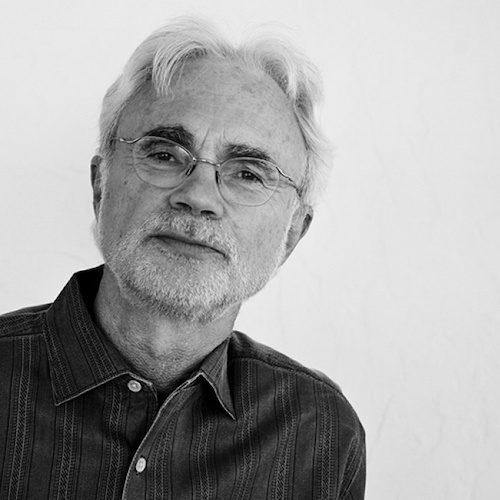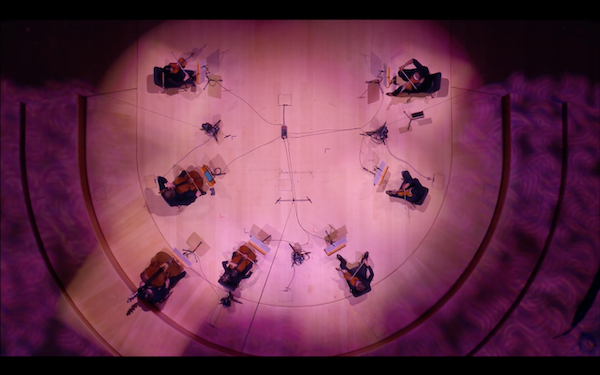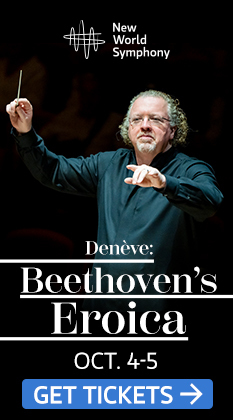Adams hosts New World program of Adams and more

John Adams, one of America’s preeminent contemporary composers, has been a regular presence at the New World Symphony. When plans were originally announced for the 2020-2021 season, Adams was scheduled to conduct a large-scale orchestral concert, part of the NWS Sounds of the Times series.
With the first part of this season rescaled for the Covid 19 era, Adams instead curated a chamber program of two of his own works and scores by two of his younger creative colleagues.
The performances were streamed live from Miami Beach’s New World Center Saturday night with the composers providing filmed introductions after supervising rehearsals via Zoom. An exhilarating hour and 15 minutes of music making by New World fellows (who all wore masks) made the strongest case for each of four excellent works.
Adams’s early and late period were represented with a pair of works reflecting his move from minimalism to a much wider compositional toolbox. Hallelujah Junction (1998) takes its title from a truck stop in the High Sierras on the California-Nevada border near where Adams has a cabin. Scored for two pianos, the work begins with a repetitive motif that is repeated identically in each keyboard line but slightly out of sync. A middle section conveys a suggestion of impressionism as prelude to a wild finale at high speed. The 20 minute tour de force is top-drawer Adams, both exciting and delightful in its rhythmic changes and propulsion.
Wesley Ducote and Thomas Steigerwald were fully equal to the knuckle-busting motoric drive of the outer movements but also exhibited a light touch and pearl-like tone in the expressive central episode. Playing twin Yamahas (with the sound board removed from one piano), the players fully encompassed Adams’ fierce extremes of power and volume. The aerial camera shots of the two pianos were highly effective in visualizing Adams’ musical road movie and the close-ups of the keyboards conveyed the players’ tight knit collaboration.

Shaker Loops (originally conceived in 1978 and revised in 1982), which concluded the concert, is an Adams classic and one of his earliest efforts. The work was performed in its initial string sextet version rather than the more frequently played later edition for string orchestra. The title refers to the bows shaking on the instruments’ strings. This 26-minute essay in four connected movements is prime minimalism, crafted in a distinctive voice.
The vibrating strokes create an irresistible sense of momentum, especially in the opening and closing movements (“Shaking and trembling” and “A final shaking”). In “Loops and verses” Adams proves that minimalism can be rhapsodic as well as a driving force. The final section is almost a hoedown with a soft landing.
In his introductory remarks, Adams expressed astonishment that the players could give such a brilliant and polished performance of this complex score while distanced on the stage and without a conductor.
Indeed violinists Chelsea Sharpe, Brendon Elliott and Ethan Hoppe, violist Chien Tai Ashley Wang, cellists Ben Fryxell and Vivian Chang and bassist Antonio Escobedo more than fulfilled all of Adams’ formidable demands. Their pacing, precision and attention to minute dynamic details matched the work’s relentless forward motion. In the third movement, Fryxell’s solo cello (over constant motivic underpinning) spun out Adams’ long-limbed melody with tonal beauty.
Between the two Adams pieces, two short works offered more introspective musical ruminations. be still and know by Carlos Simon offers seven minutes of solemn, contemplative stasis. Simon said that this soft miniature embodies the presence of God in his life. Amy Sunyoung Lee’s cello tone glistened and blended smoothly with the spare vibrato of Michael Rau’s violin and Steigerwald’s bolder chording.
Ear, Skin and Bone Riddles by the Brazilian-born, Chicago-based Marcos Balter is a six-minute setting of texts by Michael Walsh, a Minneapolis poet. Balter’s static phrases and rich harmonies weave a haunting sonic landscape. Soprano Susan Hellman Spatafora delivered Balter’s parse lines with a rich timbre, bell-like high notes and great clarity, accompanied by evocative lighting. The restrained playing of violinist Dillon Welch and cellist Clare Bradford aided the atmosphere of stillness.
Members of the New World Symphony play Frederick Tillis’s Song for Sister Hokkaido, Caroline Shaw’s Punctum, Dvořák’s Piano Quartet No. 2 and Ian Dickie’s O Bury Me Not 2 p.m. November 15 streamed on IDAGIO. nws.edu
Posted in Performances
Leave a Comment
Sun Nov 8, 2020
at 2:14 pm
No Comments

